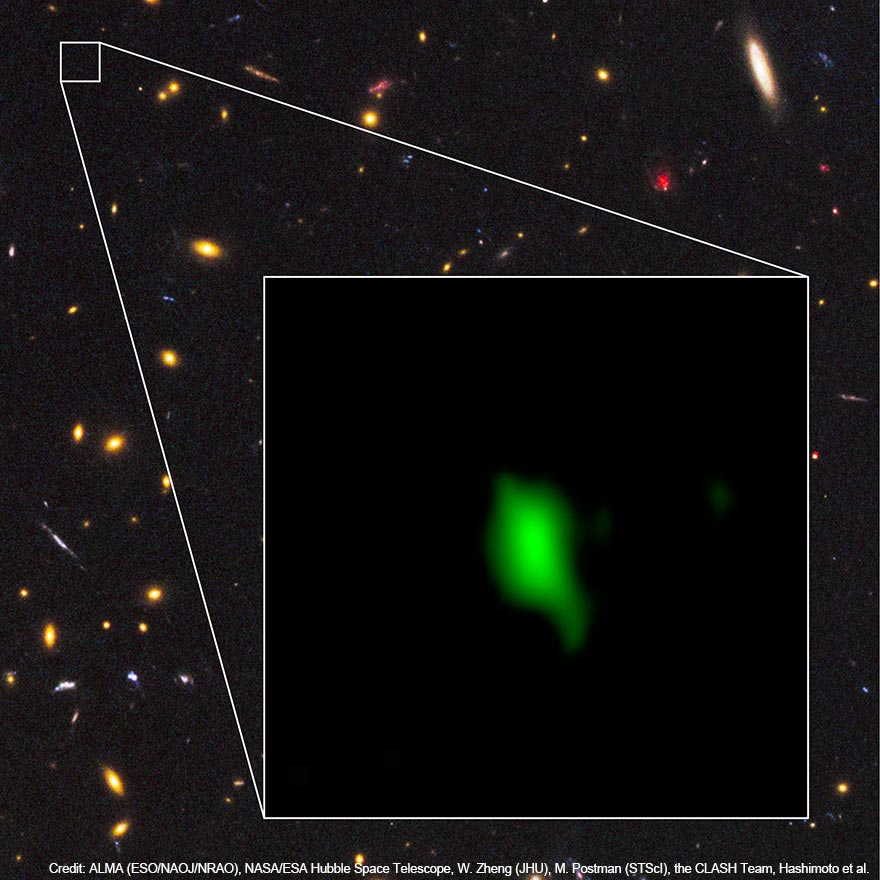ALMA Finds Oxygen 13.28 Billion Light-Years Away - Most Distant Oxygen Indicates Mature Nature of a Young Galaxy
| Science

Astronomers detected a faint but definite signal of oxygen in a galaxy located 13.28 billion light-years away from us, through observations using the Atacama Large Millimeter/submillimeter Array (ALMA). Breaking their own records, this marks the most distant oxygen ever detected in the Universe. Referencing infrared observations, the team determined that star formation in the galaxy started at an unexpectedly early stage; 250 million years after the Big Bang.
“Rather than saying I was happy, it would be more accurate to say I was thrilled to see the signal of the most distant oxygen,” explains Takuya Hashimoto, the lead author of the research paper published in the journal Nature and a researcher at Osaka Sangyo University and the National Astronomical Observatory of Japan. “I was excited enough that the signal appeared in my dreams and I had difficulty sleeping that night.”
These observation results are published as Hashimoto et al. “The onset of star formation 250 million years after the Big Bang” in Nature on May 16, 2018.